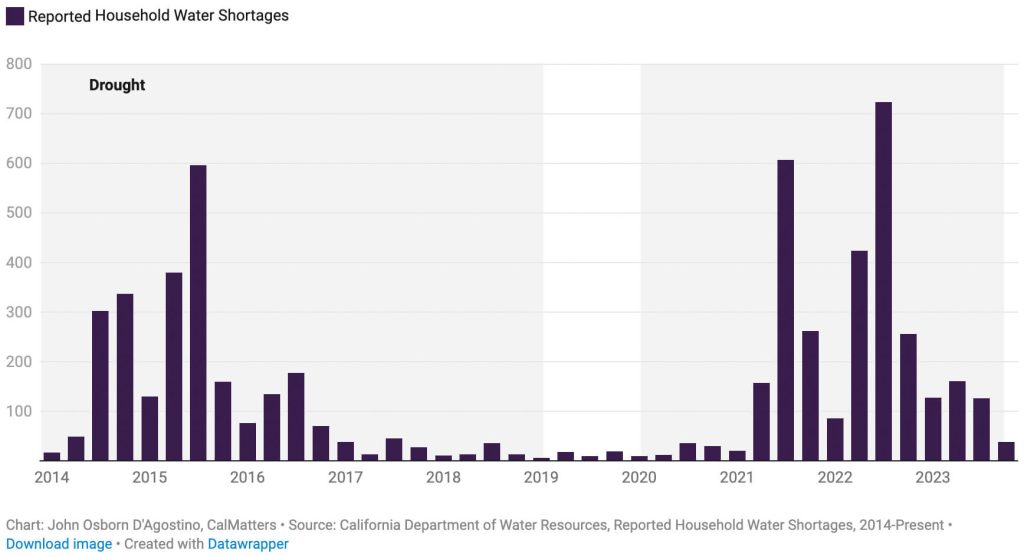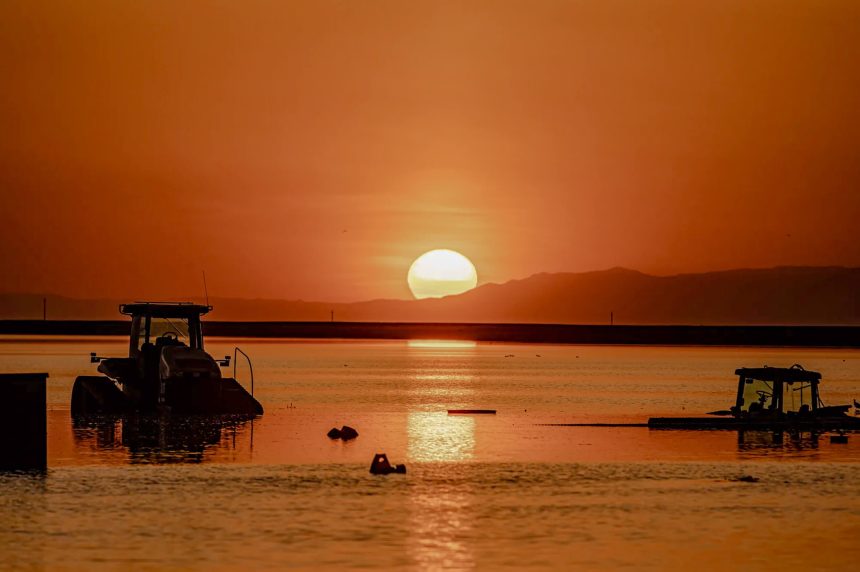Climate Change and Flooding
The state takes more action on climate change in rules and legislation as drought is replaced by flooding.
By RACHEL BECKER AND ALEJANDRO LAZA, CalMatters
California was deluged with storms and floods at the beginning of 2023, bringing home the severity of impacts from climate change, particularly in the low-income communities of Planada in Merced County and Pajaro in Monterey County.
Despite the deluge, California’s longstanding groundwater crisis continued. With hundreds of wells in the Tulare Lake groundwater basin at risk of going dry under new groundwater plans, state water officials for the first time moved to crack down on local groundwater managers.
The year opened with California at an impasse with other Western states as they negotiated allocation of the Colorado River’s overtapped supplies. But it closed with the federal government poised to greenlight a historic pact by California, Arizona and Nevada to use less water through 2026.
Facing little opposition, the Legislature passed a law that will force businesses and institutions to remove decorative lawns. But the state’s new proposals to cut water use in cities and towns were more contentious, with water providers saying they will be costly and difficult to achieve.
The year also brought a major milestone to California’s far north, where four aging hydroelectric dams spanning the California-Oregon state line will be removed by the end of 2024. Now tribes and communities along the river wait anxiously to see what the future holds.
California filed suit seeking to hold ‘Big Oil’ accountable financially for contributing to “climate change-related harms in California,” including extreme drought, wildfires and storms. The state alleges that oil companies deceived the public for decades. Newsom also spoke at a United Nations panel on climate change and traveled to China on a climate-themed trip.
On the policy front, California approved two closely-watched, first-in-the-nation bills that will force large companies to disclose their greenhouse gases and the financial risks posed by climate change. California met its goals for new electric car and truck sales ahead of schedule, and announced plans to eliminate its popular electric car rebate program to focus instead on providing subsidies only to lower-income car buyers.
The state also pressed ahead with plans to harness offshore wind, despite many uncertainties about building floating platforms in deep ocean waters off Humboldt County and Morro Bay.
Despite a wet year, households continue to report water shortages at levels similar to the end of the last big drought
Above-average rainfall and hardy snowpack caused by several big rain events in early 2023 helped replenish some groundwater across the state. But households continued to report shortages throughout the year despite that at similar levels compared to 2016, where the previous mega-drought started to recede.

Major issues for 2024: California has set aside $52.3 billion to prepare the state for climate change but fiscal uncertainty could test the state’s ability to spend those dollars. Climate activists will be watching closely to see whether two key climate bills passed in 2023 are watered down, with Gov. Gavin Newsom calling for revisions to delay their implementation. California is bracing for what could be another wet year, even as it wrestles with how to manage a drier future. Lawmakers may consider reviving bills taking aim at the state’s ancient, byzantine water rights system, and negotiations will continue over how to allocate the Colorado River’s dwindling supply after 2026.
For More California News Visit www.zapinin.com/california-news.


